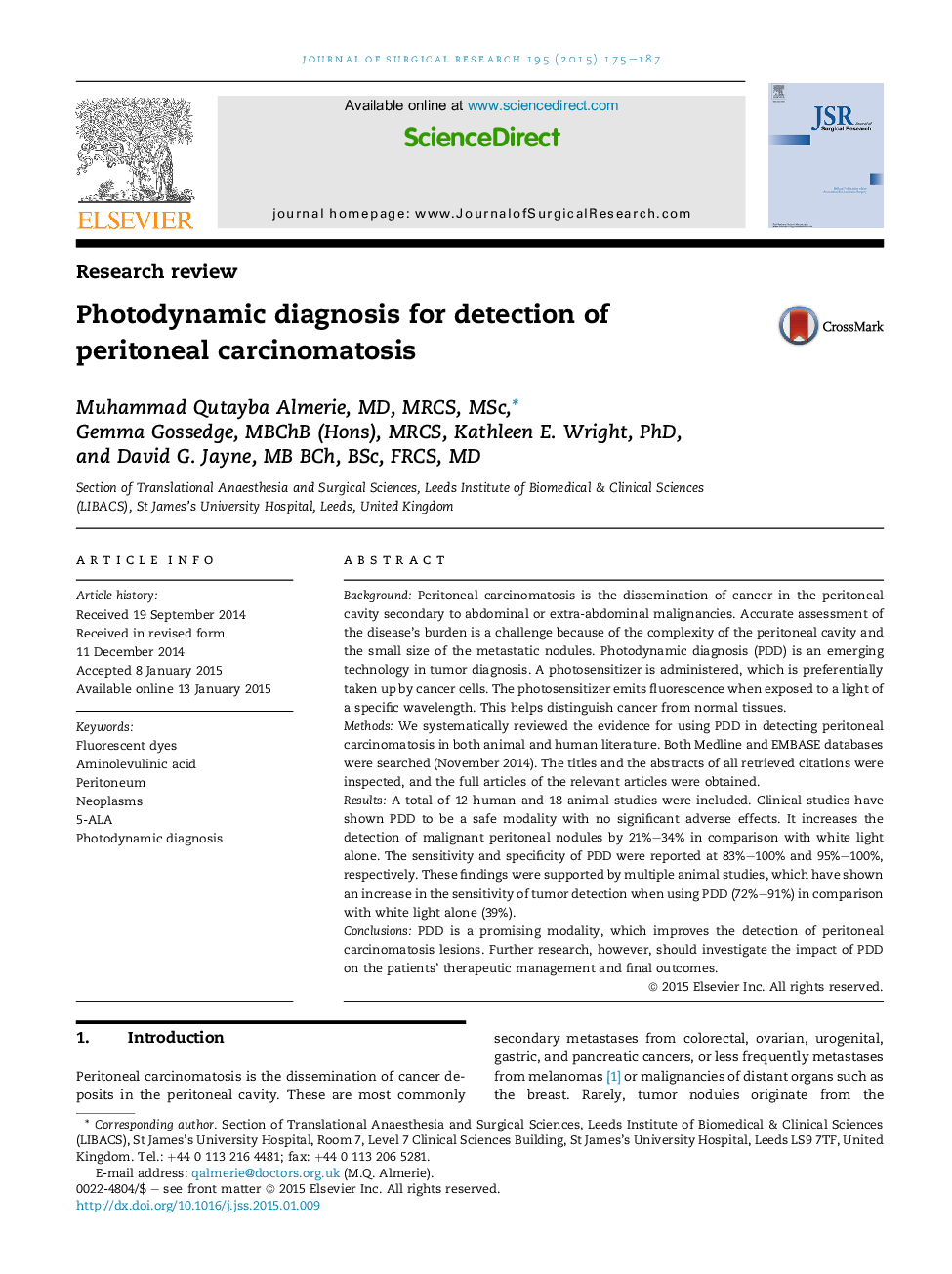| Article ID | Journal | Published Year | Pages | File Type |
|---|---|---|---|---|
| 4299887 | Journal of Surgical Research | 2015 | 13 Pages |
BackgroundPeritoneal carcinomatosis is the dissemination of cancer in the peritoneal cavity secondary to abdominal or extra-abdominal malignancies. Accurate assessment of the disease's burden is a challenge because of the complexity of the peritoneal cavity and the small size of the metastatic nodules. Photodynamic diagnosis (PDD) is an emerging technology in tumor diagnosis. A photosensitizer is administered, which is preferentially taken up by cancer cells. The photosensitizer emits fluorescence when exposed to a light of a specific wavelength. This helps distinguish cancer from normal tissues.MethodsWe systematically reviewed the evidence for using PDD in detecting peritoneal carcinomatosis in both animal and human literature. Both Medline and EMBASE databases were searched (November 2014). The titles and the abstracts of all retrieved citations were inspected, and the full articles of the relevant articles were obtained.ResultsA total of 12 human and 18 animal studies were included. Clinical studies have shown PDD to be a safe modality with no significant adverse effects. It increases the detection of malignant peritoneal nodules by 21%–34% in comparison with white light alone. The sensitivity and specificity of PDD were reported at 83%–100% and 95%–100%, respectively. These findings were supported by multiple animal studies, which have shown an increase in the sensitivity of tumor detection when using PDD (72%–91%) in comparison with white light alone (39%).ConclusionsPDD is a promising modality, which improves the detection of peritoneal carcinomatosis lesions. Further research, however, should investigate the impact of PDD on the patients' therapeutic management and final outcomes.
